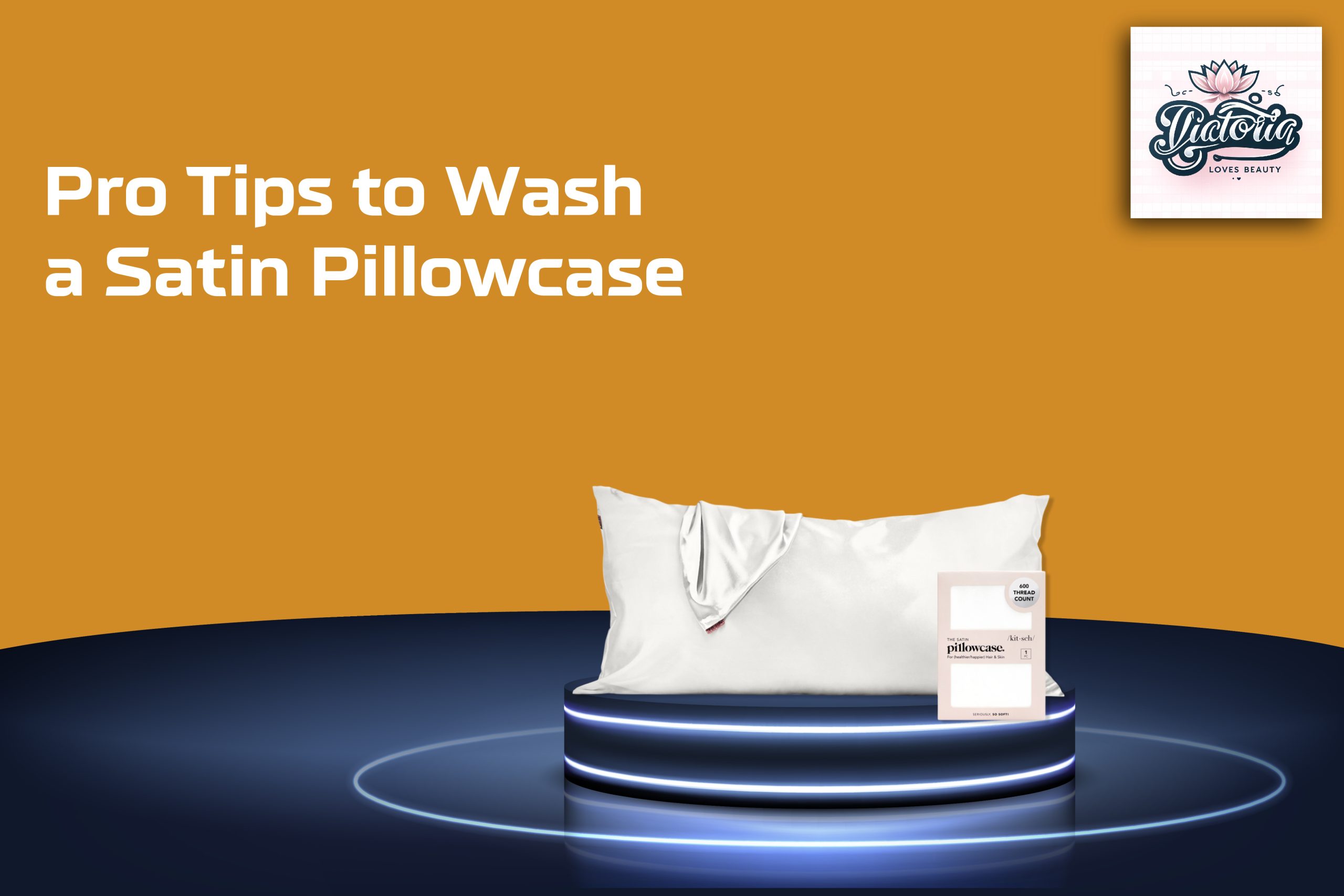Greetings from the abundant realm of satin pillowcases! They not only feel amazing against your skin, but they also keep your hair hydrated and frizz-free. But to keep reaping these rewards, you must know how to take care of them. Satin pillowcases are becoming increasingly popular due to their possible benefits for hair, beauty, and opulent feel. A satin pillowcase helps decrease wrinkles, lessen hair breakage, and promote a restful night’s sleep. But to get these benefits to the fullest, you must understand how to properly take care of your satin pillowcase. The peaceful night with the longevity of your stained Pillowcase goes hand in hand. It will enhance your comfort and offer fantastic benefits for your hair and skin. To maintain this fabric requirement, a little extra care and attention. You will require the washing pillow tips from the quality and rapid following types. The different tips have benefits for the different types and have the different types and compiling the quality.
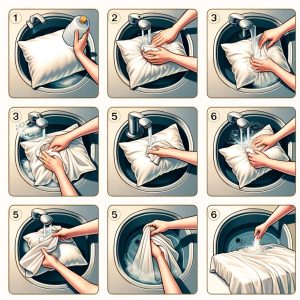
This comprehensive guide will walk you through the essential steps and tips for maintaining your satin pillowcase, ensuring it remains smooth, shiny, and in excellent condition. From washing and drying techniques to storage and product care, we’ve covered you with the ultimate guide to caring for your satin pillowcase. So, let’s dive in and discover how to keep your satin pillowcase looking and feeling its best for years.
Checking the Label
First things first, check your Pillowcase’s label. If it says “dry-clean only,” follow that instruction. Otherwise, most satin pillowcases, especially those made from synthetic fibers like polyester, are safe to wash at home. It is essential to use the case for a pillowcase for the dual and provide significant guidance for washing and maintaining it. Following the general care tips mentioned earlier, satin pillowcases are essential. Cleaning uses different types of materials to develop the different patterns in the organization. It has a different form of the place, a different form section, and a different form that will arrange for the range of material composition, washing instructions, drying recommendations, and special care instructions. The proper care and the pacific of the Pillowcase will have a different period and simulation of the pillow that will have a quality and prolong its lifespan. The level of guidance will be safeguarding its quality and prolonging its lifespan. The general guidance of sanitation and sanitation has different types that will have general guidelines of sanitation general case.
Spot Treating Stains
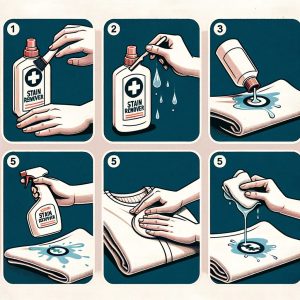
Spot-treating stains on your satin pillowcase is a gentle and effective way to address minor stains without washing the entire Pillowcase. Here’s how you can spot and treat stains on satin: to avoid the gentle touch to avoid the delicate fabric. You can have various materials used for different sanitation and have different materials needed, such as mild liquid detergent, clean, white cloth or sponge, lukewarm Water, Distilled White Vinegar, Blow, or basin.
Patience and a gentle touch are crucial when spot-treating stains on a satin pillowcase. Avoid harsh chemicals and vigorous scrubbing to maintain the fabric’s luster and quality. Professional cleaning may be the safest option if the stain persists or you’re unsure about treating it yourself.
Accidents happen, and your Pillowcase might get stained. Here’s how to tackle common stains:

Blood: Dab with detergent, soak for an hour, then blot with white vinegar. Remember to soak the stain area in cold water to remove the blood stain. Avoid hot Water, as it can set the stain. Then, lightly dab the area with hydrogen peroxide, rinse it with cold Water, and blot it dry.
Makeup: Blot with rubbing alcohol, rinse, and soak for an hour. Suppose you have a different type of makeup and oil-based stain. In that case, you will sprinkle the affected area with cornstarch or talcum powder and let it sit for about 15 to 30 minutes to absorb the weight for the different places. Then, lightly dab the area with hydrogen peroxide, rinse it with cold Water, and blot it dry.
Oils: Dealing with the oil stain pillowcase requires carefully lifting the oil without damaging the delicate fabric. For the oil extraction, you can blot the oil stain, so Cover it with flour for an hour and vacuum it up. You can have paper or a towel for the observance of extra oil. For the difference, liberally sprinkle power with the oil stain. A gentle brushing for the spot will arrange the different causes and have the spot treatment that will arrange the treatment for creating the different spot treatments for the different forms of the rise and air dry for the pillow case and have a different patch test on a small, inconspicuous area of the Pillowcase before applying any cleaning solution to ensure it doesn’t cause discoloration or damage.
Preparing for Washing
Preparing the pillow case for Washing is critical to ensure its gentle treatment and preservation. Turn the Pillowcase inside out to protect the outer layer. For the close zippers or fastening, ensure they are close before the different types of separate colors while washing similar colors together. And turn the color for the different types for the setting. When washing the clothes, the Stubborn Stains must be added to ensure enough space for the detergent to circulate freely, preventing excessive friction between items.
Use a mesh laundry bag or a cotton pillowcase to prevent damage.
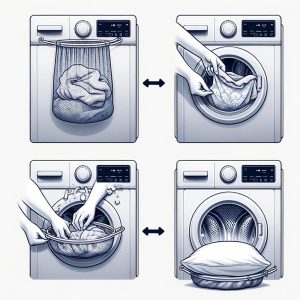
Tackling Stains on Satin Pillowcases:
- Test First: Always apply cleaning solutions to a small, hidden area first to check for damage or discoloration.
- Oil-Based Stains: Use a specific cleaner designed for oil; dab gently rather than rub.
- Food and Drink Stains: Treat with a mild detergent and cold water, blotting softly.
- Blood Stains: Use cold water and a gentle rubbing motion; avoid hot water as it sets the stain.
- Ink and Dirt Stains: Apply an alcohol-based solution or stain remover, then rinse off.
Inspecting and Maintaining Pillowcases:
- Examine Regularly: Check for loose threads, pilling, and signs of wear, especially along seams.
- Good Lighting: Inspect in well-lit conditions to catch any small issues.
- Smooth Fabric: Straighten out the fabric to see surface problems.
- Remove Pilling: Use a fabric shaver or lint roller to remove bobbles without damaging the fabric.
- Snip Threads: Carefully cut loose threads with scissors, avoiding the fabric.
- Regular Care: Gentle washing and careful maintenance prevent damage and prolong pillowcase life.
Test for colorfastness with a damp white cloth on the hem. If the color bleeds, opt for dry cleaning.
Machine Washing Instructions: a pillowcase with a damp white cloth is straightforward. You can prepare white clothes, Dampen the cloth, choose the test area, press the damp clothes, and Examine the test fabric area. While washing the different types, you need to be careful when washing them separately. You must avoid it carefully by using a different degeneration and gentler detergent. Dry cleaning might be a safer option for items that bleed color significantly.
Use a mild or gentle detergent. Woolite is a good choice. For the gentle and mild, you are going to have a pillowcase for how to use a read and care label, sort your laundry, measure the detergent, pre-treat stains, Load the washing machine, Add the detergent, Select the proper cycle, Choose the cold Water, start the washing Machine, Remove Promptly, Ari Dry or Tumble Dry Low. Iron if Necessary. Bufall with this stape for the different detergents like Woolite, you can iron them in a low heat setting. Helped with the Pillowcase, ensuring it was cleaned gently and maintained its quality over time.
Use only half the recommended amount of detergent.
Using the different types of detergent along with the recommended total amount for the Pillowcase and having different care lave for the Pillowcase, measuring the detergent, pre-test stains, loading the washing Machine, half the recommended amount of detergent can help prevent detergent buildup and excessive soap residue on your delicate fabrics, ensuring that they remain clean and in good condition.
Select the cold water setting and the delicate cycle.
You will give the delicate water cycle for selecting the different water regeneration for the elevated water cycle. You have to check the care level on your stained Pillowcase for different cases and types of sanitation. Place a pillowcase and set your machine by water temperature and water cycle for the small amount of detergent; in the washing machine, use the small amount of detergent and have different types of wash cycles. Add a temperature of mild detergent for the washing machine and ensure the detergent has completed one cycle for the Pillowcase flat on a clean, dry towel to air dry. Avoid hanging it directly in the sun or using a high-heat dryer, as this can cause damage to the fabric.
Opt for a short spin cycle or a lower spin setting.
Selecting a shorter spin cycle or a lower spin setting reduces the risk of damaging the delicate satin fibers and minimizes any potential wrinkling. Afterward, you can follow the recommended air-drying methods to ensure your satin pillowcase retains its smooth and luxurious feel.
Don’t mix with heavy fabrics. Wash with similar delicate items or alone
Avoiding mixing your satin pillowcase with heavy fabrics is crucial to prevent any damage or snags during the washing process. It will be handy when you have similar delicate items. Use lingerie bag, Avoid Overloading, inspect for loose items, and follow care level instructions.
Handwashing Alternative
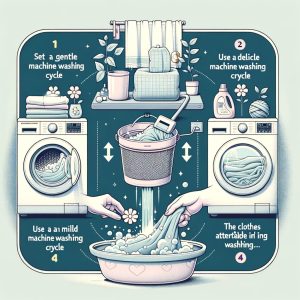
Handwashing is gentler and recommended for high-end or particularly delicate satin pillowcases. Use cool Water and a gentle detergent, gently kneading to clean. If you prefer, the hand was stained Pillowcase. You want to provide the extra sensation of falling a basin or sink, add mild detergent, submerge the Pillowcase, soak, gently clean, Rinse Thoroughly, Remove excess Water, and air dry for the proper sanitation of the Pillowcase. By washing your satin pillowcase carefully, you can maintain its luxurious feel and prolong its lifespan while avoiding the potential risks of machine washing.
Drying Your Satin Pillowcase
Drying your satin pillowcase properly is essential to maintain its smooth texture and prevent damage to the different forms of the pillow and the formation of the space. Air drying is the best method for drying your satin pillowcase, as it minimizes the risk of damage and maintains its quality. If you need to expedite the drying process or air drying isn’t an option, you can use a dryer with low heat. Avoid using a high-heat setting in the dryer, as it can damage the satin fabric and lead to wrinkles or shrinkage. Always opt for low heat or air drying to maintain your satin pillowcase’s luxurious feel and appearance.
Avoid wringing or twisting the Pillowcase.
Avoid wringing or twisting your satin pillowcase during Washing and drying. Satin is a delicate fabric, and these actions can damage the fibers and affect the smooth texture. There are different sanitation methods for the tight twisting and squeezing of the fabric to remove excess Water. Twisting the fabric, even gently, can also harm satin.
Do not use a dryer. Lay the Pillowcase flat on a towel to dry, avoiding direct sunlight or heat.
To maintain the luxurious feel and quality of your satin pillowcase, it’s best to avoid using a dryer altogether. Instead, after washing the stained Pillowcase, you can gently place a pillow to remove the excess Water. Lay the satin pillowcase flat on a clean, dry towel or a clean, lint-free surface. Avoid exposing it to direct sunlight or any heat sources, as this can damage the satin fabric and cause color fading. Avoiding direct sunlight or heat will help preserve your satin pillowcase’s quality and smooth texture.
If necessary, iron on the lowest setting without steam.
If your satin pillowcase becomes wrinkled during Washing or drying, you can use a clothing iron to smooth the wrinkles. Satin is a delicate fabric, so it’s best to avoid ironing whenever possible, prevent wrinkles during Washing and drying, and opt for air drying, as discussed earlier.

Storing Your Satin Pillowcase
Properly storing your satin pillowcase when not in use can help maintain its quality and prevent damage. For the storage of the Pillowcase, you can follow the steps like keeping it clean, Using a stained bag or Pillowcase, flood it carefully, store in a cool, Dry Place, avoiding contact with Rough Textiles, Rotating Pillowcase, Regularly Checking for stains. Once dry, fold it neatly and store it in an airtight container to prevent wrinkles and dust accumulation. Ensure that your satin pillowcase remains in excellent condition while it’s not in use.
Conclusion
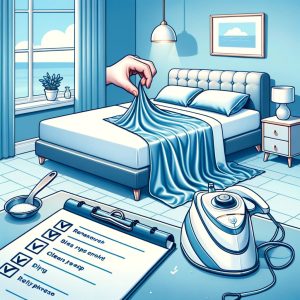
Caring for your satin pillowcase is easy. With these simple steps, you can ensure that your Pillowcase remains a cherished part of your beauty routine, offering you elegance and comfort every night. Each step is equally important while maintaining the pillow. You must be familiar with the steps such as Washing, drying, ironing, and storing correctly. Proper care and storage will help your satin pillowcase maintain its luxurious appearance and continue to provide benefits for your skin and hair. Always check the care label for specific manufacturer recommendations, as different satin fabrics may require unique care.
Caring for your satin pillowcase is essential to preserve its luxurious feel and its numerous benefits for your skin and hair. Whether you machine wash with a delicate cycle or handwash with cold Water, avoid mixing with heavy fabrics and refrain from using harsh detergents and fabric softeners. When it comes to drying, air drying is the safest option, ensuring you keep your Pillowcase away from direct sunlight and high heat. In cases where wrinkles need smoothing, use a low-heat iron with a protective cloth. Proper storage in a cool, dry place using a breathable satin bag or Pillowcase will help prevent damage and maintain its quality. By following these care instructions, you’ll enjoy the full benefits of your satin pillowcase for an extended period while keeping it looking and feeling its best.

Beauty enthusiast, mom on-the-go, and coffee addict (not necessarily in that order!). When she’s not chasing after her adorable toddler, Victoria is busy researching the latest beauty trends, testing out products, and sharing her discoveries with the world. Join her on this journey of self-care, empowerment, and finding your own unique spark of beauty!
